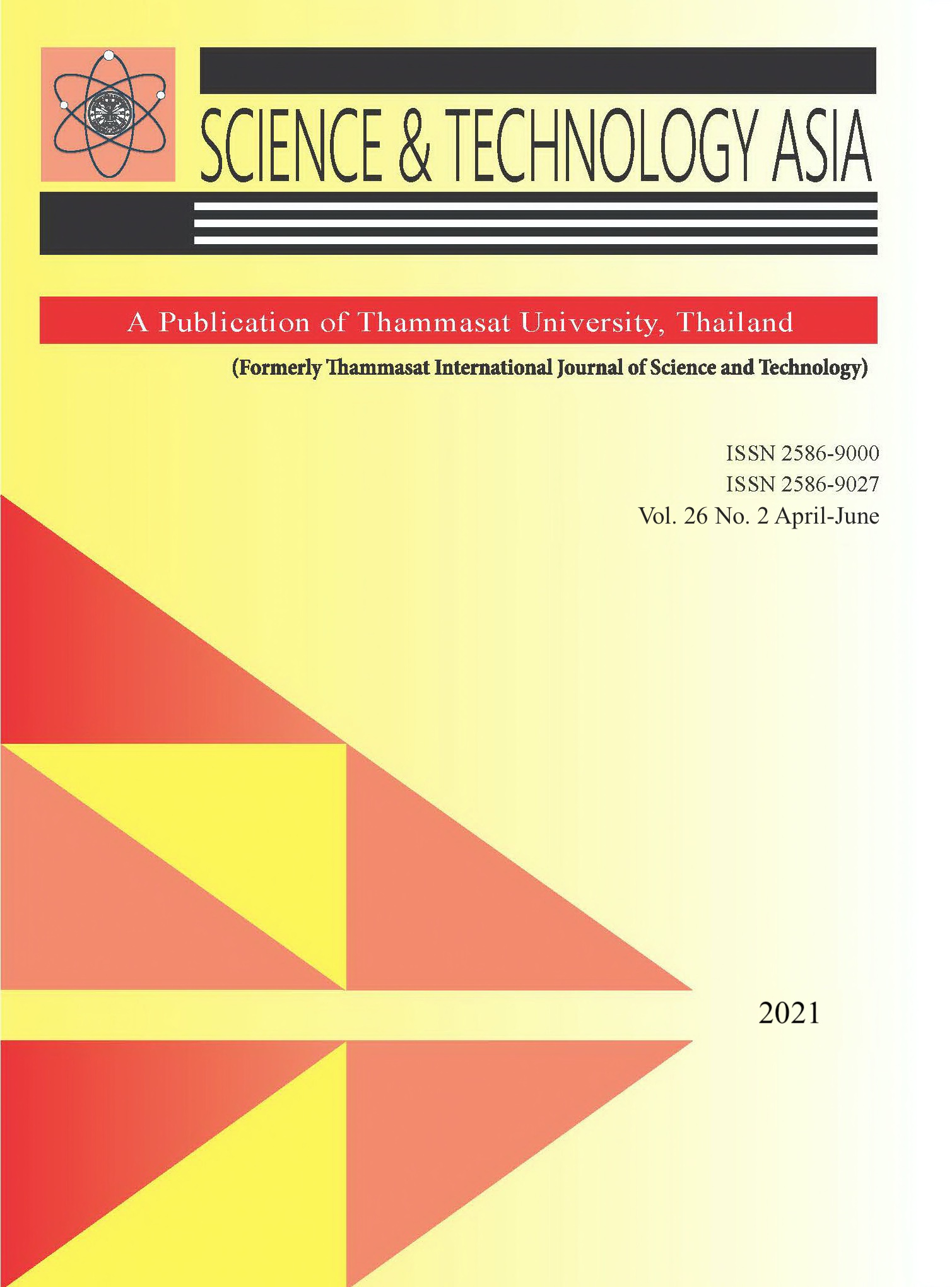Biodegradation Kinetics of Odorants from Block Rubber Drying Process Using Laboratory Scale Biofilter
Main Article Content
Abstract
The aim of this study is to define the biodegradation kinetics of odorants from the block rubber drying process and the toleration of the biofilter system according to the inlet concentrations of the odorants. In this study, a lab-scale biofilter was applied to study the degradation of the synthetic odorant gas generated from the block rubber drying process. Bacillus megaterium bacteria was fixed on polyethylene pall ring media which was used as a fixed bed in the 105.98 liter lab-scale biofilter. Vapor of butyric acid, propionic acid and methyl mercaptan mixed with clean air at a ratio matching the exhaust gas from the block rubber drying process was used as a synthetic odorant gas stream. Moisture and nutrients were periodically added into the system.
The synthetic odorant gas with concentrations range of 130.60-499.79 ppm was introduced into the biofilter to analyze the degradation efficiencies and the kinetics of the system. The result shows that the lab-scale biofilter can remove odorants with 79.94% to 80.89% efficiencies. The concentration of odorants up to 305.44 ppm did not affect the removal efficiency at the same EBRT. The result indicated that the kinetic of the biodegradation of the synthetic odorants from block rubber drying process, having the coefficient of 0.0144, complied with the first order reaction.


